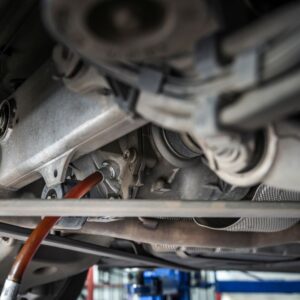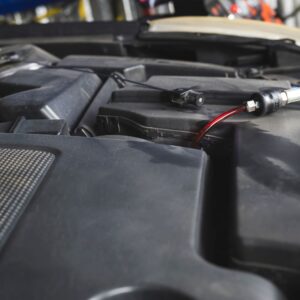Let’s face it, topping up your vehicle’s automotive fluids can be a hassle. Changing your oil, transmission fluid, and other fluids is important, but there’s no denying that it can be time-consuming and messy sometimes. But there’s a way to make things much easier, and that’s by using a fluid transfer pump.
How To Use a Fluid Transfer Pump
Using a new tool can be intimidating. Thankfully, a fluid transfer pump is relatively easy to use. Here are a few tips to help you:
Prepare Everything You Need
You’ll save yourself a lot of time by preparing everything you need before you begin. Aside from the fuel transfer pump itself, you’ll need a drain pan, shop rags or towels, and a sufficient amount of whatever fluid you’re transferring.
Prepare your work area too. Make sure there aren’t any children, animals, or open flames around. Don’t forget to wear safety goggles, protective gloves, and comfortable clothes that you don’t mind getting dirty.
Remove the Cap or Drain Plug
Depending on what automotive fluid you’re draining, you’ll have to remove the reservoir’s cap or drain plug. For example, you’ll usually have to remove the fill plug before removing the drain plug of the transmission fluid’s tank. If you aren’t sure where the cap or drain plug is, don’t hesitate to ask a mechanic for help.
Prepare the New Fluid
You can’t top up your tank without new fluid. Whether you’re pumping oil, automatic transmission fluid, or differential oil, you’ll have to make sure the container is stable and won’t tip over.
Catch the Old Fluid
Don’t forget to position your drain pan properly before you begin. Fluid transfer pumps are great for draining fluid, but things can get messy pretty fast. If you’re filling a tank to the brim, the fluid can still drip out. Make sure your drain pan is big enough to prevent any toxic fluid from spilling.
Pump the Tank
Fluid transfer pump hoses come in different sizes, so make sure you’re using the ones compatible with your vehicle. Each hose should come with a label on both ends, so make sure to attach it to your pump properly. The hole where the fluid enters through is usually labeled “IN,” while the other end where the fluid exits through is usually labeled “OUT.”
Follow the Manufacturer’s Instructions
Drain and fill procedures can vary depending on your vehicle’s year, make, and model, so be sure to follow the manufacturer’s instructions. Some cars require filling the tank until new fluid spills out, while others don’t. If you aren’t sure how to pump fluid from your vehicle, you can always ask a trusted mechanic for help.

Safety Precautions When Using a Fluid Transfer Pump
Using a fluid transfer pump is a fairly straightforward task, but you shouldn’t underestimate how dangerous it can be. You’ll be handling toxic automotive fluids, so you have to be extra careful. Here are a few safety tips to follow when using a fluid transfer pump:
Be Careful of Fluid Spills
After using your fluid transfer pump, don’t forget to check for spills under the hood. Brake fluid can eat away at paint surfaces, and motor oil can be poisonous when consumed. Clean up any spills to prevent children and pets from accidentally consuming them.
Caution: Coolant is particularly an issue with dogs because it’s sweet and some dogs will drink it.
Properly Dispose of Automotive Fluids
Most automotive fluids are classified as hazardous waste, so you can’t just throw them in the trash. Place the dirty old fluid in a sealed container. Some auto shops and service stations accept old oil for recycling, but you can also bring it to recycling centers in your city.
Stay Away From Open Flames
Never, ever store automotive fluids near an open flame or hot exhaust. Gasoline, coolant, engine oil, and transmission fluid are all flammable. To be safe, place the old fluid in a cool and dry place until you can properly dispose of it.
Clean the Pump After Use
Don’t forget to clean your fluid transfer pump when you’re done using it. Automotive fluids contain harsh chemicals that can permanently damage the pump. To keep it in good condition, give it a good wash after every use. You can also store it in a plastic bag to prevent dust, bugs, and other debris from entering the pump.
What Is a Fluid Transfer Pump?
A fluid transfer pump is a tool that creates a vacuum that sucks fluid from a tank or reservoir and then deposits it into another container. It makes tasks like changing your oil, flushing your transmission fluid, and topping up your brake fluid much easier.
You can find different types of automotive fluid transfer pumps on the market, such as manual and electric ones. Some work for different systems, while some only work for specific fluids. For example, oil transfer pumps typically only work for oil. If you need to pump transmission fluid, you’ll need a separate transmission fluid transfer pump.
How Much Do Fluid Transfer Pumps Cost?
Good-quality fluid transfer pumps can cost anywhere from $10 to $180. If you want an electric fluid transfer pump, you can expect to spend more. Smaller electric pumps can cost around $60, while bigger pumps can go for over $300.
Where to Get a Quality Fluid Transfer Pump
As you can see, having a fluid transfer pump on hand makes it much easier to top up all your vehicle’s fluids. To save yourself the hassle every time it’s time to top up your vehicle’s automotive fluids, why not purchase a fluid transfer pump for your garage? You can turn to CarParts.com if you’re looking for a quality kit.
The CarParts.com website is easy to navigate and customer-focused. It only takes a few quick clicks to browse our catalog and check out a brand new fluid transfer pump. If you have any trouble or want to ask us more questions, feel free to reach out to our friendly and helpful customer service team. They’re available around the clock to answer your inquiries, and they’re happy to tell you about the deals we’re offering for the week and the guarantees we have in place to improve your experience ordering online.
Make fluid top-ups easier for yourself. Purchase a new fluid transfer pump from CarParts.com today.
Any information provided on this Website is for informational purposes only and is not intended to replace consultation with a professional mechanic. The accuracy and timeliness of the information may change from the time of publication.






























